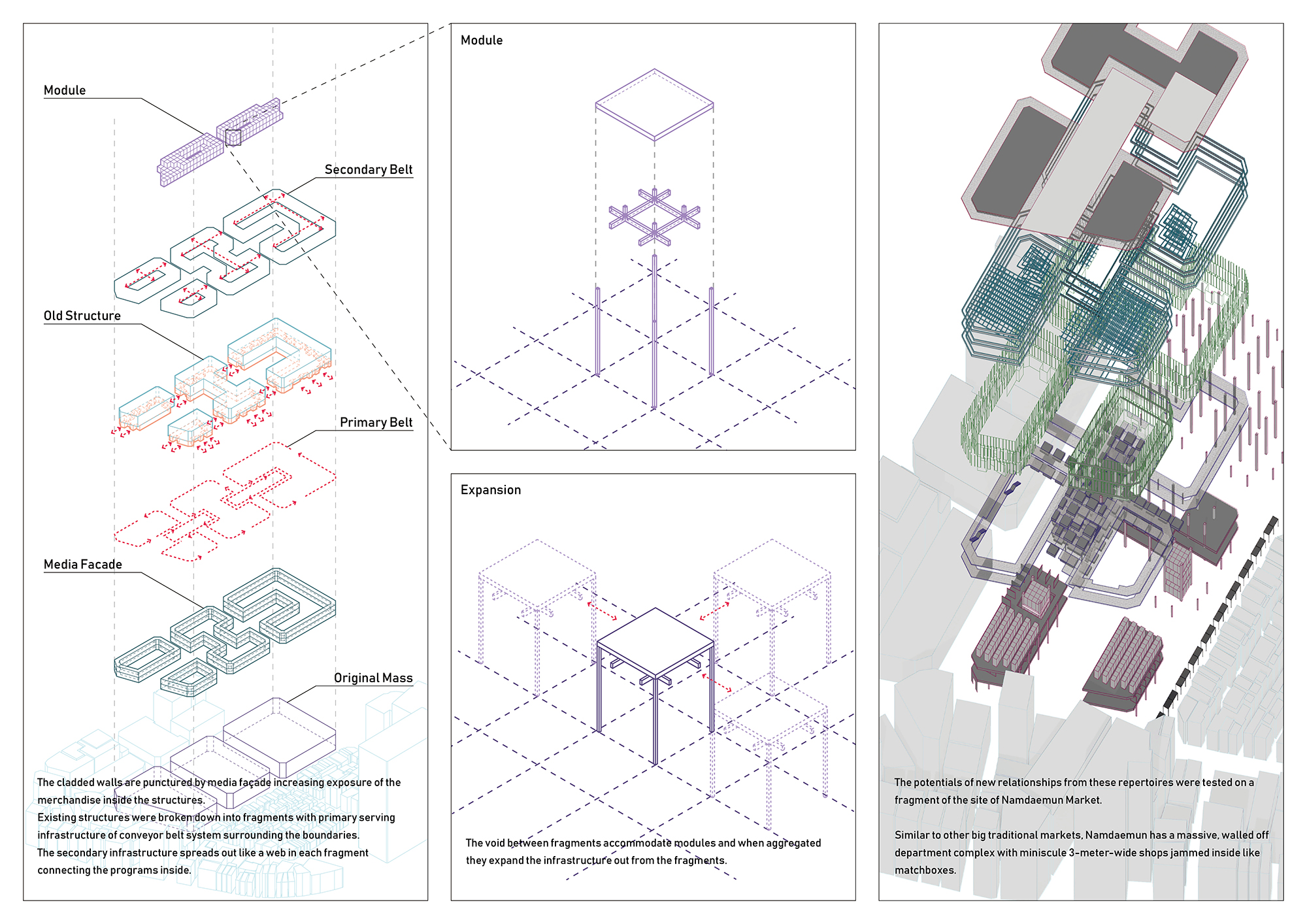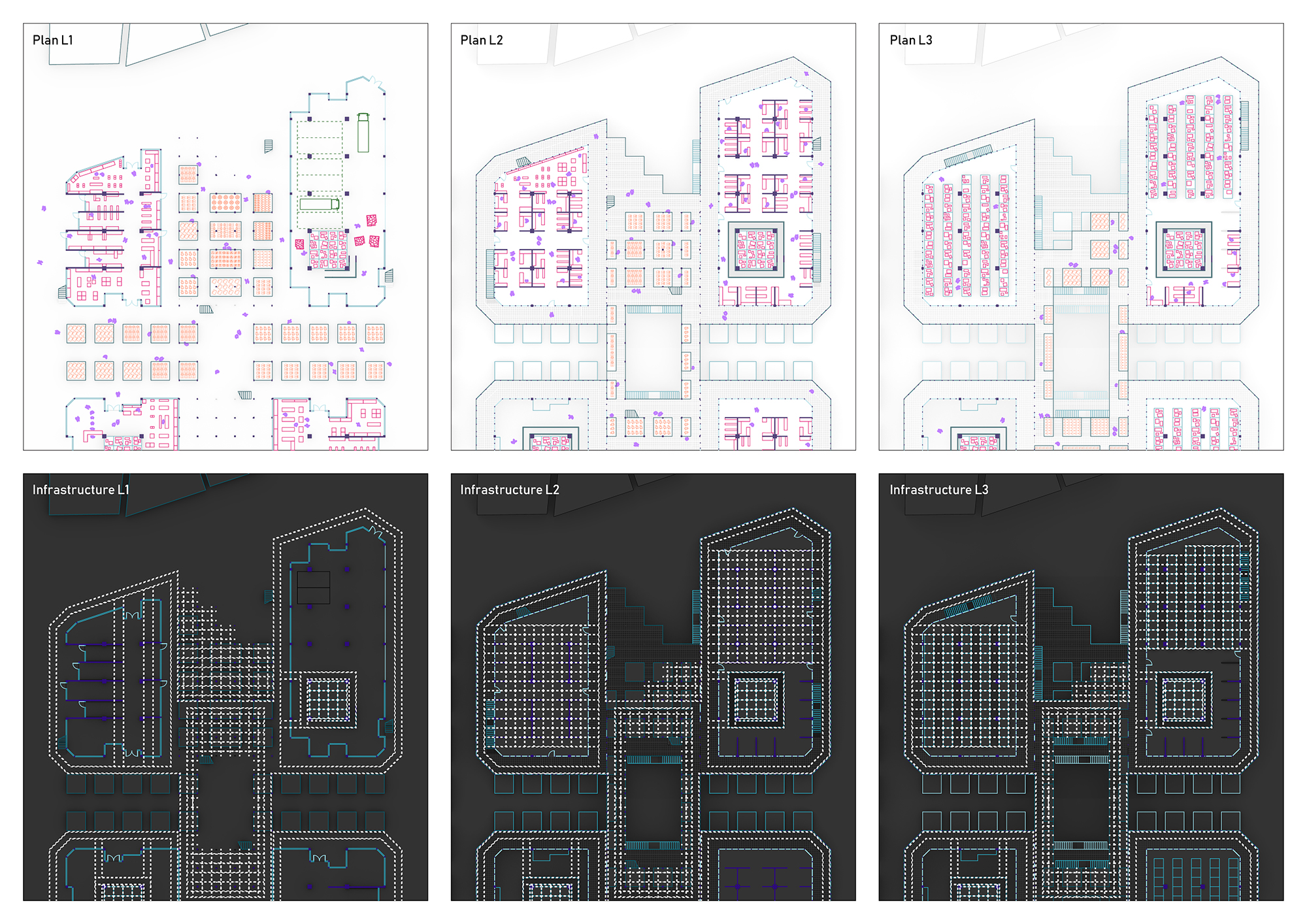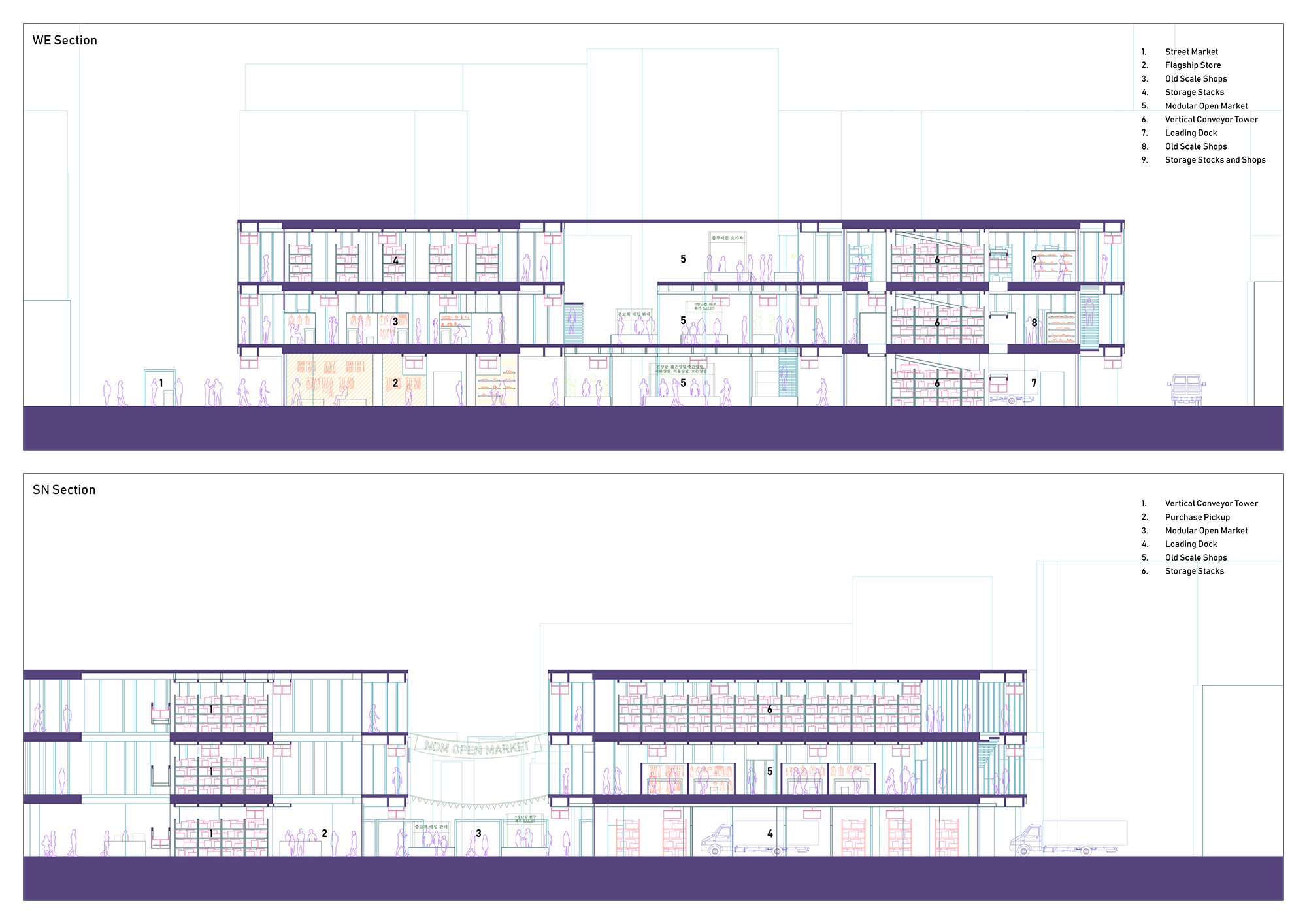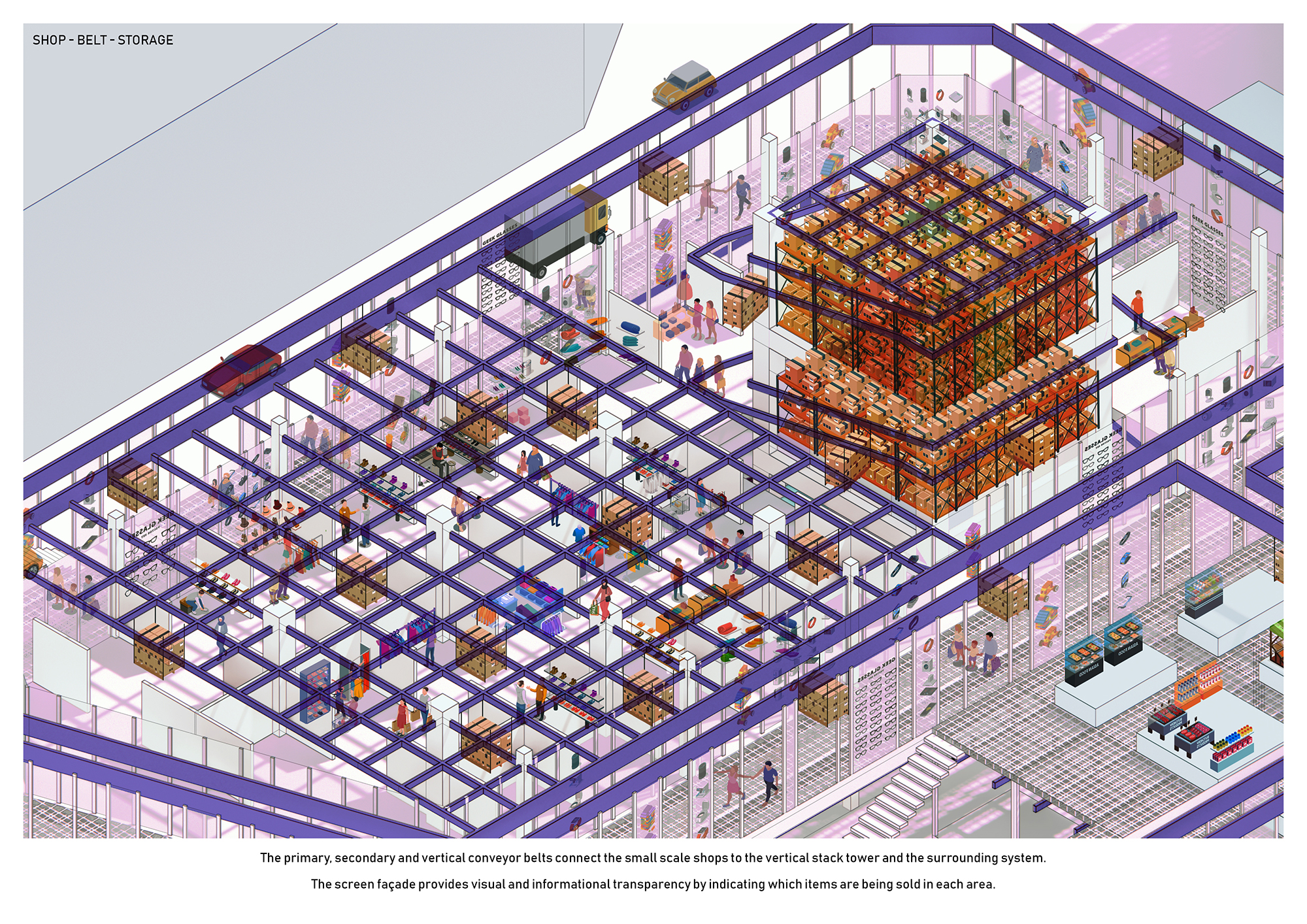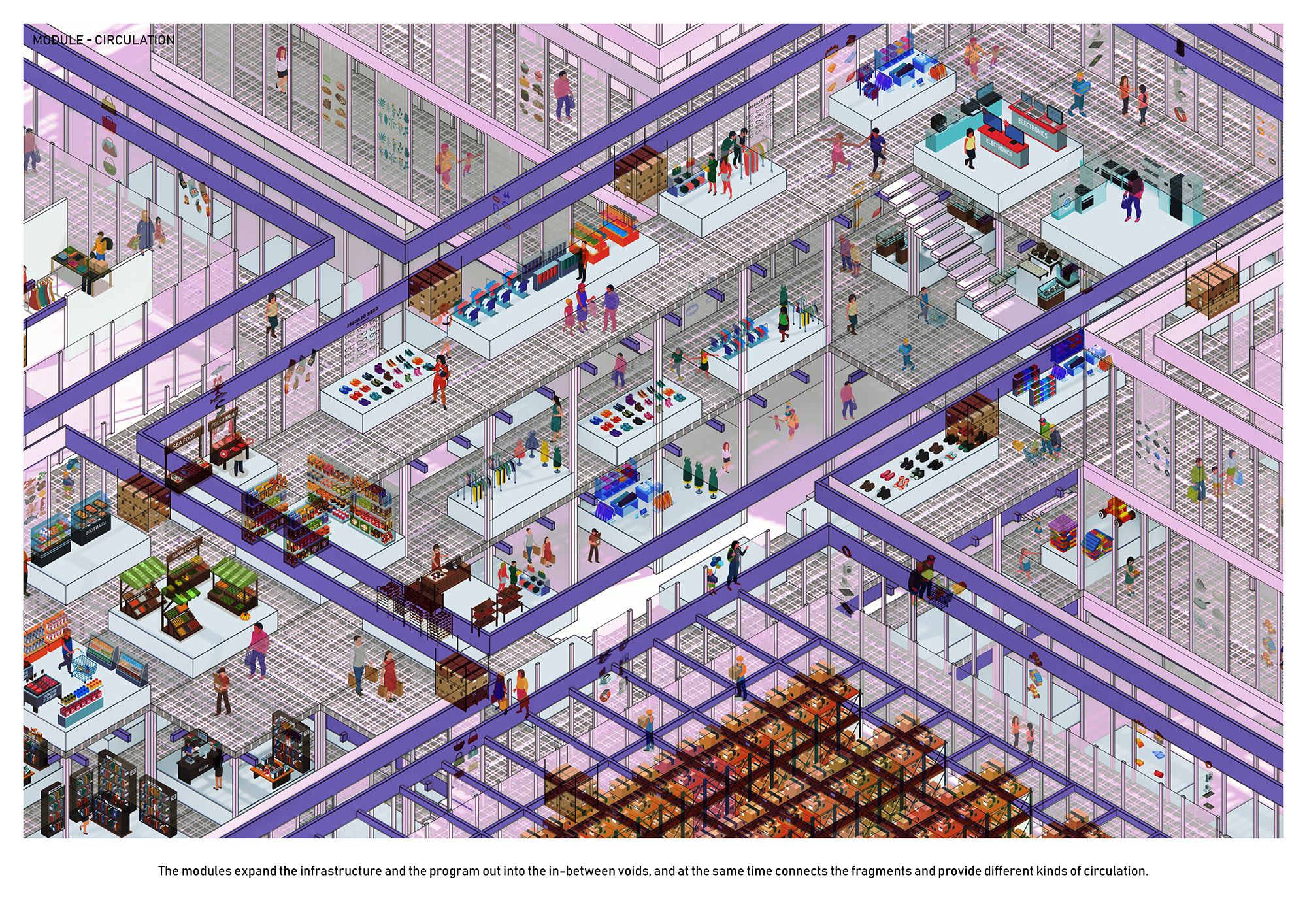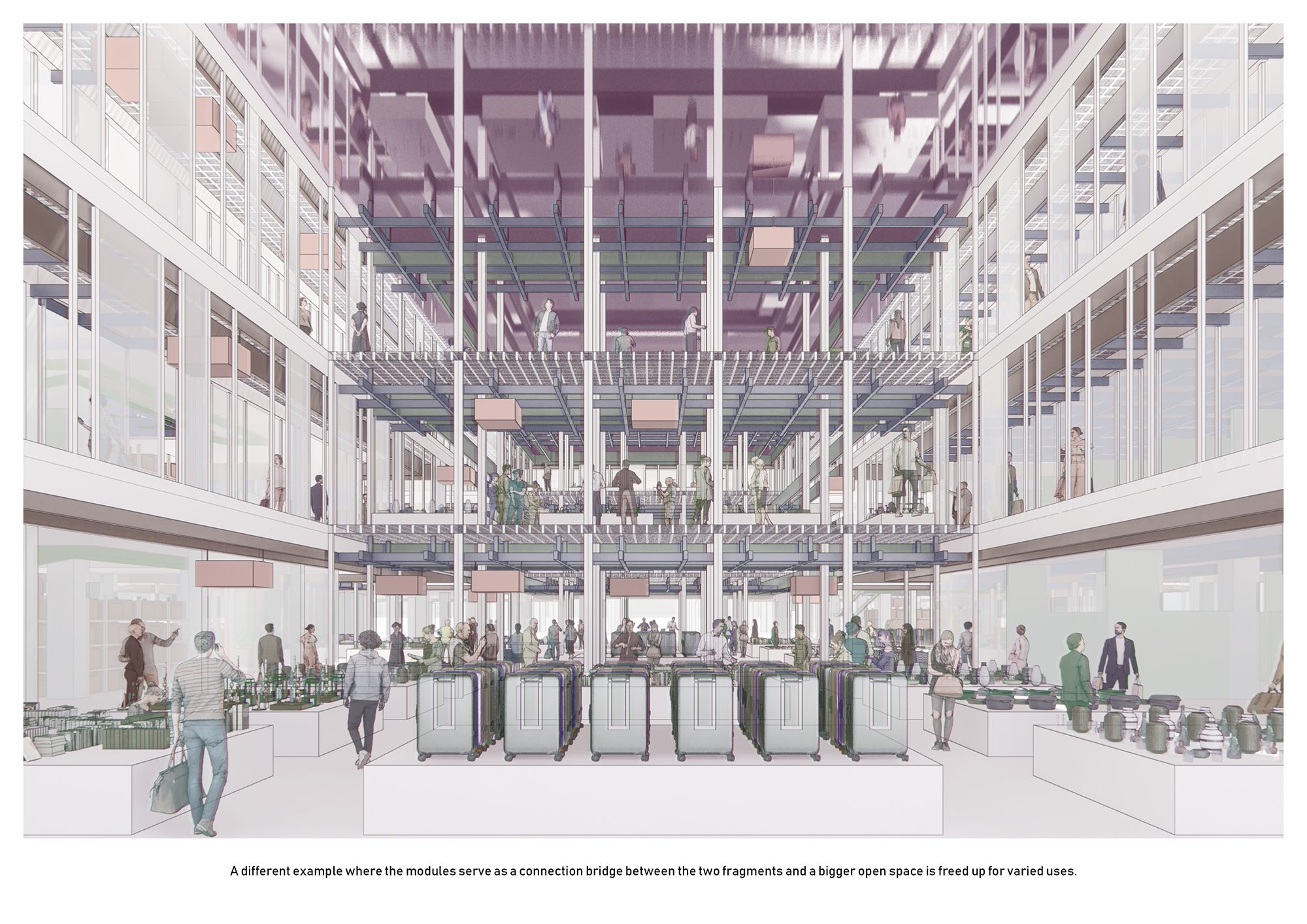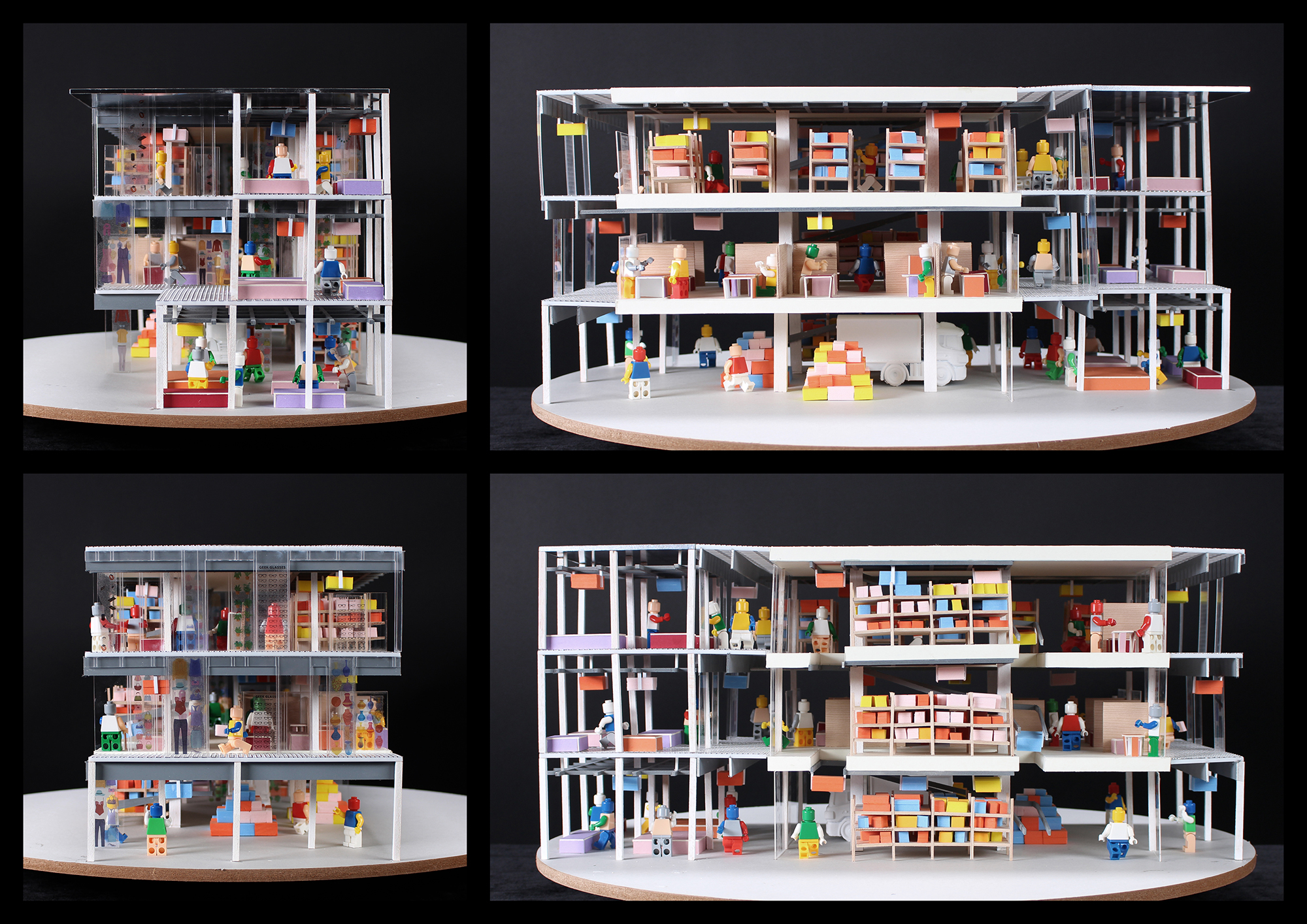
[장려상]
Shoppertoire
“건축은 세계를 따라잡는 영원한 순환 속에 있다.”
시스템으로서의 건축은 인프라의 골격과 각 요소의 프레임워크의 집합 및 결합으로 구성된다.
이때 건축가의 역할은 설계 과정을 독점하는 것이 아니라 레퍼토리의 틀을 세워 주민들이 자신의 필요와 선호에 따라 선택할 수 있는 다양한 결과를 이끌어내는 것에 있다.
본 프로젝트에서는 남대문시장 상가의 옛 구조물에 쇼핑, 물류, 상품 취급의 요소를 해체, 모듈화, 재조립, 중첩하였다.
컨베이어벨트 시스템은 각 규모의 상점, 창고, 상하차장, 쇼핑 보조 서비스를 연결하며, 모듈화된 구조는 그리드 시스템의 공간적 확장을 가능하게 한다.
각 요소의 명확성과 병치를 통해 불투명하고 미로 같은 단지에서 정보의 투명성, 그리고 방향적 투명성을 얻을 수 있으며 쇼핑객들은 체험으로서의 쇼핑의 가치를 발견하게된다.
레퍼토리는 지속적으로 변종, 미러링, 변형되며, 건축은 점유자가 건축에 일정 권력을 가지는 시스템에서 신속하고 효과적으로 변화에 대응할 수 있다.
[4th Prize]
Shoppertoire
“Architecture finds itself in a perpetual cycle of catch-up with the world.”
In architecture as a system, a skeleton of infrastructure and a framework of elements combine together to aggregate and encourage permutations. The role of the architect is not to monopolize the design process but to set up a framework of repertoires leading to varying consequences from which inhabitants can make choices according to their needs and preference. In this project, elements of shopping, logistics and product handling were deconstructed, modularized, reassembled, and overlaid on the old structures of Namdaemun market complexes. The conveyor belt system connects the small and large scale shops, the warehouses, the loading dock, and the shop-aiding services while the modularized tectonics allow spatial expansion of the grid system. The clarity of each element and their juxtaposition provides both informational and navigational transparency in the once opaque, maze-like complexes in which the shoppers can discover a new experience value to shopping. Repertoires are mutated, mirrored and morphed continuously in a system where the inhabitants wield power on their own habitat, and the architecture responds to change quickly and effectively.



